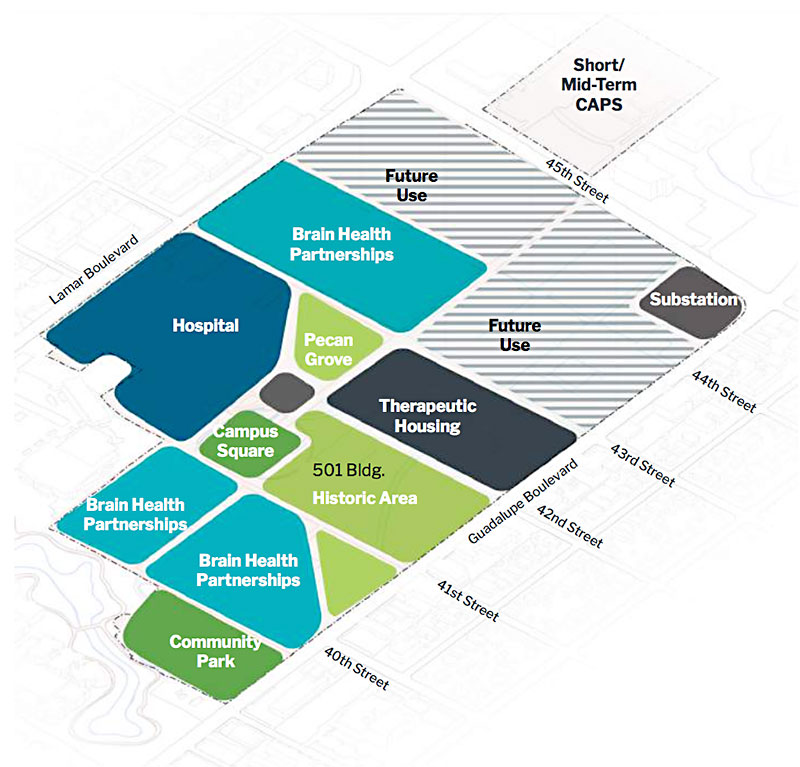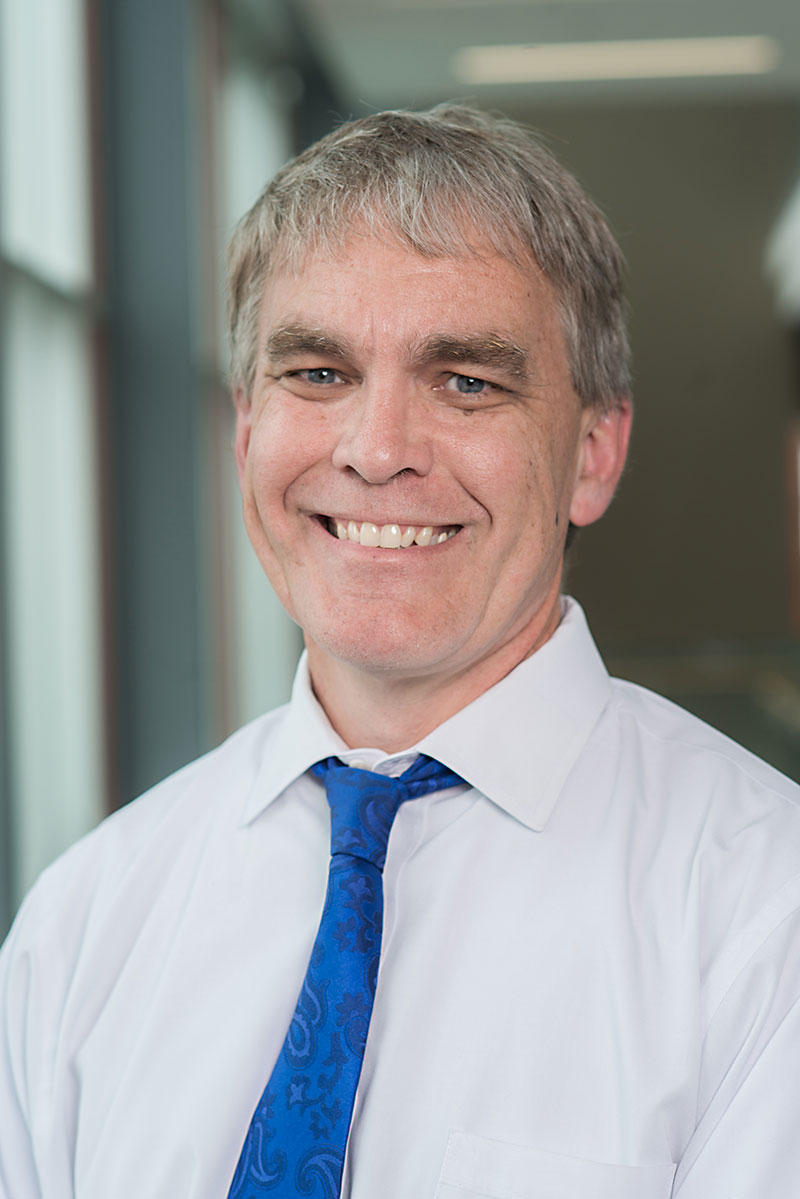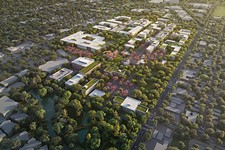Envisioning the Future of Austin State Hospital
What will it take to turn the former Texas State Lunatic Hospital into a world-class center of brain health?
By Mike Clark-Madison, Fri., March 22, 2019

It used to be lovely. There was a lake, with boats, and lily ponds, and lots of trees, and of course roses, and gravel paths to stroll or, back in the day, ride in carriages. People wanted to be there, because it was better than where they were coming from. That's what "asylum" means.
As applied to those with disabilities or mental illness in our communities, though, "asylum" was stigmatized a long time ago. So the Texas State Lunatic Asylum, opened in 1861, changed its name to Austin State Hospital way back in the 1920s. But it stayed in character as a place of refuge for Texans with unhealthy brains for some time.
Then it hit the downslope as mental health care changed for the better in theory, but deteriorated for many in practice, throughout the midcentury across the U.S. – first inside the institutions, where the population ballooned to the size of (poor, troubled) small towns, and then on the outside. Deinstitutionalization, in the wake of crusading exposés and pop portrayals of psycho wards and loony bins, let some patients get help in their communities, left a lot of others on the streets, and left institutions like ASH in a fog of shrinking resources and changing missions.
While not the stuff of nightmares, today's ASH is no longer a garden spot either, though still ringed with roses. Its oldest building – the third-oldest public structure in the state, modified in 1904 with its distinctive portico, which now houses hospital administration as Building 501 – is more charming than creepy. Mostly, the ASH campus is just worn out and has been for a long time as it has awaited whatever it was supposed to be in its next life.
While the plan – unveiled earlier this year with funding on the table at the state Legislature now – to reinvent ASH as a world-class center of brain health is new-ish in its particulars, the pressures to do something new and different with the 95-acre Central Austin campus and with the state's mental health system have been building for decades. If the "ASH Redesign" proves to be, as its proponents hope, a great step forward for Texas, that's partly because it's being taken from so far back.

A Big-Brain Moment
"Brain health" is what we're calling it now, or at least the team behind the new ASH is, because "mental health" is almost as stigmatized as "asylum," and "behavioral health" is an obvious euphemism that describes little. Brain health is a function of total health, just like heart health, which makes it odd to consider how much brain health care is delivered outside the total health care system – in courts and jails, for example, a common destination for people experiencing mental health crises both small and large.
Optimally, according to the ASH Redesign team led by UT's Dell Medical School, the one in five of us who need brain health care (only half of whom actually seek treatment) would have that need met without recourse to a hospital, because preventive and proactive care and consistent access help sustain health above the neck as well as below. This "idealized continuum" includes places like ASH to respond to moments of medical complexity and crisis, just as Austin has a Level I trauma center at Dell Seton and Texas has places like Houston's M.D. Anderson Cancer Center. Indeed, state Sen. Kirk Watson, D-Austin, who (again) is rallying the troops and the bucks to make a big project happen in Austin, envisions tomorrow's ASH as "the M.D. Anderson of the brain."
That highlights how ASH's redesign now, though long needed, has benefited from fortuitous timing as three driving forces intersect. One is Texas' desire to maintain and improve its station in the health sciences, plus Austin's desire via Dell Med to improve its relative position within Texas. That makes "M.D. Anderson of the brain" sound less far-fetched or boosterish than it did back in 2011, when Watson first rolled an ASH reboot into his "10 in 10" agenda of a decade's worth of Austin health care goals, of which Dell Med was also one.
At the same time, the entire state hospital system (11 facilities in total, including ASH) has groaning needs for a reboot – if not to chart a new course in academic psychiatric medicine, then simply to meet the health needs of Texans after decades of deferred maintenance and drift. The adult-inpatient core of ASH today is in a condition that "stresses the ability of clinical teams to provide evidence-based care," states the redesign report, while the campus as a whole "is replete with aged and dilapidated support structures similarly suffering from decades of minimal and inconsistent upkeep, many of which are also beyond renovation and simply sit empty, serving as little more than potential liabilities to the state."
"ASH Is Always Full"
The Legislature in 2013 commissioned the study that put numbers to what everyone already knew about the Texas mental health system's collapse; that kicked off a funding cycle projected to last three of Texas' budget biennia, of which we are now completing the first and writing the spending plan for the second. It's been expected that ASH will get $300 million in capital funding for a new hospital in this session's House Bill 1 (it's the House's turn to float up the budget bill). As always, because Texas is a weird and wacky place that makes these decisions in a frenzied and time-constrained cage match, that money may not come through. But Watson, who sits on the Senate Finance Committee, told Austinites at a community meeting to unveil the proposal in late January that he's "been very proud of the Legislature's willingness to invest in brain health as being just like any other form of health care."
Again, that's $300 million to build a new hospital that's about the same size as ASH is now, so that's how bad things have gotten. And it can be confusing – when one knows that the ASH campus 50 years ago housed more than 3,300 people – to hear that "ASH is always full," as the redesign report bluntly states. But using those 250 or so beds differently (and the staff and resources that come with them; we're not just talking about pieces of furniture) is essential to reimagining ASH. "People fixate that since the facilities are backed up, we need more care, we need bigger hospitals," said Dr. Steve Strakowski, Dell Med chair of psychiatry and leader of the ASH Redesign team, at the January meeting. "But we don't; we need better use of those hospitals. If you can decrease the length of stay by half, you've doubled your beds."
Brain health does differ from other areas of health care in the time and energy it demands of both patients and providers; in a standard hospital, or even a specialty center like M.D. Anderson, stays of longer than 10 days are pretty rare. (The average hospital stay in the U.S. is about 4.5 days.) At ASH, the average stay for an adult "civil" admission is 63 days, and for a "forensic" admission – i.e., one required by law – it's 90 days. Some stays are much longer. "Due to a myriad of barriers to discharge," reads the redesign report, "a significant number of ASH beds function as residential care, in which individuals essentially live at the hospital irrespective of clinical need."
That often means people have nowhere else to go. "ASH is not designed to be a residential hospital," said Strakowski. "There are alternatives, but they are very underdeveloped in Texas, and the Medicaid process" – which pays for most long-term care for people under 65 – "is so unwieldy nobody can get it to work."
As such, ASH has a long waitlist, which is particularly problematic for those "forensic" admits that have become the state system's stock-in-trade. These largely fall under the broad heading of "competency restoration," or treating and stabilizing the mentally ill prior to or during their disposition by the criminal justice system. ASH performs this task for defendants and inmates in 38 counties, though most of the people in need are from the Austin metro area.
There's no inherent reason why competency restoration couldn't be treated like most "civil" mental health issues are, in community hospitals and rehabs and the like, even if paid for by state money or through local public mental health agencies (Integral Care here in Travis County, Bluebonnet Trails Community Services in Williamson and Bastrop, et al.). "There are ways to do that differently," said Strakowski, "rather than shipping someone from Matagorda to here and then back for a trial – if they even have one. The waitlist time for competency restoration can be longer than the sentence for the original offense."
This requires a commitment of money from all the possible payers who can make sure that provider in Matagorda doesn't go bankrupt, which will in some way have to be backstopped by a Texas Legislature that has been hamstrung by the state's political culture when it comes to helping people in need. That's true at most every stop along the mental health continuum of care, and Strakowski notes that putting people first, in the right places and closer to home, "is not only better care, it's less expensive. We use $300 million a year" – that is, enough to build a new ASH – "to compensate for broken systems, rather than providing direct care."
A Future of Opportunities
The ASH campus gives the state, the Dell Med team, and everyone else with a hand in this endeavor plenty of room to "remove existing outmoded and empty buildings and replace them with functional examples of additional components of a brain health care continuum," as described in the redesign report. That brings up the third factor shaping the current state of play: the broad desire of both the state and the city to do more with these big chunks of desirable Central Austin land.
The use of public land to build housing (and occasionally some other things, but mostly housing) is an oft-pulled arrow in the quiver of both urbanists and preservationists in Austin. But most public land that isn't being used optimally now is in small pieces scattered throughout town; the biggest opportunities are at places like ASH, or Camp Mabry, or Lions Municipal Golf Course, or what is now the Grove, or ... you can see the pattern here. The same pattern was in place when the state cleaved off pieces of the ASH campus for private development in past decades, which begat Central Park (home to the original Central Market) and the Triangle, both of which were hugely controversial when proposed.

So the ASH Redesign team, including UT with its checkered past of town-gown relations over development, and especially Watson who has to face these voters, understands it has a good opportunity to build out the new ASH campus in ways that both support the vision of a world-class brain health platform and activate a large Central Austin parcel while not aggravating the neighbors. The new hospital – which is prospectively sited at the southwest corner of the campus, facing Lamar and neighboring Central Market – would then be surrounded by not just medical office buildings but also housing, particularly for low-income people with disabilities who might need the services of ASH and who make up a substantial segment of Austin's unmet housing needs.
Unlike at Muny, where the neighbors have enough sociopolitical capital to simply put the kibosh on grand urbanist redevelopment plans, the ASH Redesign vision fits in with the city's official planning vision, which has been on the books for nearly 20 years as part of the Hyde Park Neighborhood Plan. That 2000 document "articulated four things [to guide] the ASH campus if things were to change there," says Hyde Park Neighborhood Association Co-President Sarah Cook, "and all four things have the ability to take place within this proposal."
Taken together, that means a new hospital, flanked by parkland and (mostly) civic and (some) private uses, would come close to both HPNA's and Dell Med's sweet spots. (Parkland is itself part of the therapeutic vision of a brain health campus, just as it was in the "asylum" days.) Cook says Hyde Park is "very pleased with the transparency both the medical school and the state have exhibited, and ... that the patient was the center for all conversations."
Of course, there has to be some grousing between neighbors and urbanists or it wouldn't be Austin, and an example of the latter perspective came when Towers.net published an article titled "After 158 Years, the Austin State Hospital Deserves Better." Author James Rambin compares the vision presented in January to other nearby developments, including the state's own health campus adjoining the Triangle, and sees opportunities for more height, more land at ASH for private uses, and thus more money to support the chronically cash-starved hospital itself. Urbanists, and particularly transit advocates, also want to see more connectivity through the site, ideally an extension of the flanking street grids in Hyde Park and Rosedale. Rambin quotes Pete Gilcrease of the HPNA-alternative Friends of Hyde Park: "Unfortunately, if this plan succeeds, it would lock this location into a poor land use pattern for decades to come."
This somewhat predictable spat was met with the also predictable response from Strakowski that everything is currently conceptual – really, the "plan" for the campus is a few high-level maps and renderings – and that the focus right now is on getting the funding to build the new hospital itself, after which good things will follow. As land use frictions in Austin go, ASH is in a fairly mellow place (though things can blow up quickly around here), particularly when compared to the problems in the system itself that Austin residents as well as providers want to see solved. "I've been very happy with this city's interest in mental health," said Strakowski. "What brought me here [from the University of Cincinnati] was this opportunity. We're developing new models of care here."
Got something to say on the subject? Send a letter to the editor.











